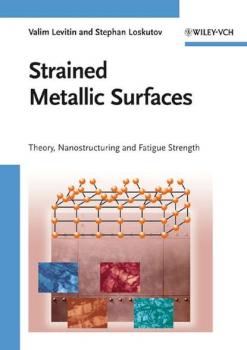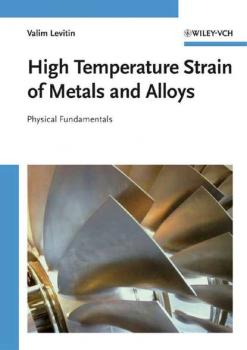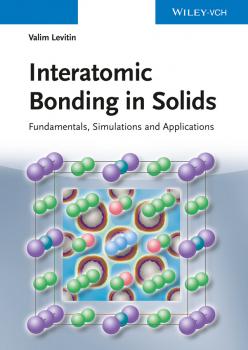ТОП просматриваемых книг сайта:
Valim Levitin
Список книг автора Valim LevitinАннотация
Providing students as well as engineers and researchers with a must-have insight into the complexities of surface structure and behavior, this monograph extends beyond the usual introductory books, presenting concentrated knowledge on the surface science of metals, and connecting fundamentals with actual applications. Beginning with explanations of the intricacies of surfaces and their differences to bulk, it takes the reader through the vital steps towards macroscopic metallic components as well as surface nanostructuring. In so doing, it makes use of theory, experimental techniques, examples, and modeling to facilitate a firm understanding.
Аннотация
Creep and fatigue are the most prevalent causes of rupture in superalloys, which are important materials for industrial usage, e.g. in engines and turbine blades in aerospace or in energy producing industries. As temperature increases, atom mobility becomes appreciable, affecting a number of metal and alloy properties. It is thus vital to find new characterization methods that allow an understanding of the fundamental physics of creep in these materials as well as in pure metals. Here, the author shows how new in situ X-ray investigations and transmission electron microscope studies lead to novel explanations of high-temperature deformation and creep in pure metals, solid solutions and superalloys. This unique approach is the first to find unequivocal and quantitative expressions for the macroscopic deformation rate by means of three groups of parameters: substructural characteristics, physical material constants and external conditions. Creep strength of the studied up-to-date single crystal superalloys is greatly increased over conventional polycrystalline superalloys. From the contents: – Macroscopic characteristics of strain at high temperatures – Experimental equipment and technique of in situ X-ray investigations – Experimental data and structural parameters in deformed metals – Subboundaries as dislocation sources and obstacles – The physical mechanism of creep and the quantitative structural model – Simulation of the parameters evolution – System of differential equations – High-temperature deformation of industrial superalloys – Single crystals of superalloys – Effect of composition, orientation and temperature on properties – Creep of some refractory metals For materials scientists, solid state physicists, solid state chemists, researchers and practitioners from industry sectors including metallurgical, mechanical, chemical and structural engineers.
Аннотация
The connection between the quantum behavior of the structure elements of a substance and the parameters that determine the macroscopic behavior of materials has a major influence on the properties exhibited by different solids. Although quantum engineering and theory should complement each other, this is not always the case. This book aims to demonstrate how the properties of materials can be derived and predicted from the features of their structural elements, generally electrons. In a sense, electronic structure forms the glue holding solids together and it is central to determining structural, mechanical, chemical, electrical, magnetic, and vibrational properties. The main part of the book is devoted to an overview of the fundamentals of density functional theory and its applications to computational solid-state physics and chemistry. The author shows the technique for construction of models and the computer simulation methods in detail. He considers fundamentals of physical and chemical interatomic bonding in solids and analyzes the predicted theoretical outcome in comparison with experimental data. He applies first-principle simulation methods to predict the properties of transition metals, semiconductors, oxides, solid solutions, and molecular and ionic crystals. Uniquely, he presents novel theories of creep and fatigue that help to anticipate, and prevent, possibly fatal material failures. As a result, readers gain the knowledge and tools to simulate material properties and design materials with desired characteristics. Due to the interdisciplinary nature of the book, it is suitable for a variety of markets from students to engineers and researchers.



